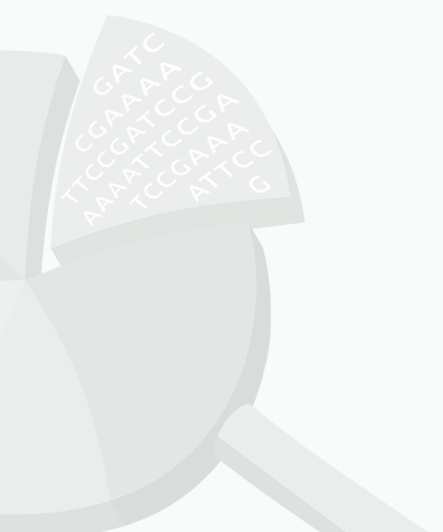| Headers | Date: Wed, 20 Nov 2024 15:27:12 GMT
Server: Apache
X-Frame-Options: SAMEORIGIN
X-Forwarded-Proto: https
Accept-Ranges: bytes
Etag: W/"55469-1666041128000"
Last-Modified: Mon, 17 Oct 2022 21:12:08 GMT
Content-Type: application/rdf+xml
Content-Length: 55469
Keep-Alive: timeout=15, max=99
Connection: Keep-Alive
X-Count: 26
X-Vip-Info: 130.14.16.63:443
X-Pool-Info: /Common/id_pool
Strict-Transport-Security: max-age=31536000; includeSubDomains; preload
|
|---|
| Body | <rdf:RDF
xmlns:dct="http://purl.org/dc/terms/"
xmlns:rdf="http://www.w3.org/1999/02/22-rdf-syntax-ns#"
xmlns:owl="http://www.w3.org/2002/07/owl#"
xmlns:rdfs="http://www.w3.org/2000/01/rdf-schema#"
xmlns:xsd="http://www.w3.org/2001/XMLSchema#" >
<rdf:Description rdf:about="http://id.nlm.nih.gov/mesh/vocab#broaderDescriptor">
<rdfs:subPropertyOf rdf:resource="http://id.nlm.nih.gov/mesh/vocab#broader"/>
<rdfs:range rdf:resource="http://id.nlm.nih.gov/mesh/vocab#Descriptor"/>
<rdfs:domain rdf:resource="http://id.nlm.nih.gov/mesh/vocab#Descriptor"/>
<dct:description>Relates one Descriptor to another. The immediate parent Descriptor(s) of a given Descriptor based on the TreeNumber hierarchy. Example: both DUI D007254 (Information Science) and DUI D008491 (Medical Informatics Applications) are parents of DUI D016247 (Information Storage and Retrieval).</dct:description>
<rdfs:comment>Relates one Descriptor to another. The immediate parent Descriptor(s) of a given Descriptor based on the TreeNumber hierarchy. Example: both DUI D007254 (Information Science) and DUI D008491 (Medical Informatics Applications) are parents of DUI D016247 (Information Storage and Retrieval).</rdfs:comment>
<rdfs:label>broaderDescriptor</rdfs:label>
<rdf:type rdf:resource="http://www.w3.org/2002/07/owl#ObjectProperty"/>
</rdf:Description>
<rdf:Description rdf:about="http://id.nlm.nih.gov/mesh/vocab#pharmacologicalAction">
<dct:description>Relates Descriptors or SupplementaryConceptRecords to Descriptors. Reference to a Descriptor describing observed biological activity of an exogenously administered chemical represented by a Descriptor or SupplementaryConceptRecord.</dct:description>
<rdfs:comment>Relates Descriptors or SupplementaryConceptRecords to Descriptors. Reference to a Descriptor describing observed biological activity of an exogenously administered chemical represented by a Descriptor or SupplementaryConceptRecord.</rdfs:comment>
<rdfs:label>pharmacologicalAction</rdfs:label>
<rdf:type rdf:resource="http://www.w3.org/2002/07/owl#ObjectProperty"/>
</rdf:Description>
<rdf:Description rdf:about="http://id.nlm.nih.gov/mesh/vocab#broaderConcept">
<rdfs:subPropertyOf rdf:resource="http://id.nlm.nih.gov/mesh/vocab#broader"/>
<rdfs:domain rdf:resource="http://id.nlm.nih.gov/mesh/vocab#Concept"/>
<rdfs:range rdf:resource="http://id.nlm.nih.gov/mesh/vocab#Concept"/>
<dct:description>Relates one Concept to another. A semantic relationship between two Concepts, usually between the preferred concept and subordinate concept(s) where one is broader in meaning. Example: M0024816 is broader than M0024811.</dct:description>
<rdfs:comment>Relates one Concept to another. A semantic relationship between two Concepts, usually between the preferred concept and subordinate concept(s) where one is broader in meaning. Example: M0024816 is broader than M0024811.</rdfs:comment>
<rdfs:label>broaderConcept</rdfs:label>
<rdf:type rdf:resource="http://www.w3.org/2002/07/owl#ObjectProperty"/>
</rdf:Description>
<rdf:Description rdf:about="http://id.nlm.nih.gov/mesh/vocab#broader">
<rdf:type rdf:resource="http://www.w3.org/2002/07/owl#ObjectProperty"/>
</rdf:Description>
<rdf:Description rdf:about="http://id.nlm.nih.gov/mesh/vocab#casn1_label">
<dct:description>A property of Concepts. Free-text of the Chemical Abstracts Type N1 Name which is the systematic name used in the Chemical Abstracts Chemical Substance and Formula Indexes. The systematic name is a unique name assigned to a chemical substance to represent its structure. First available in 1995.</dct:description>
<rdfs:comment>A property of Concepts. Free-text of the Chemical Abstracts Type N1 Name which is the systematic name used in the Chemical Abstracts Chemical Substance and Formula Indexes. The systematic name is a unique name assigned to a chemical substance to represent its structure. First available in 1995.</rdfs:comment>
<rdfs:label>casn1_label</rdfs:label>
<rdf:type rdf:resource="http://www.w3.org/2002/07/owl#DatatypeProperty"/>
</rdf:Description>
<rdf:Description rdf:about="http://id.nlm.nih.gov/mesh/vocab#lexicalTag">
<dct:description>A property of Terms. A 3-letter value that indicates the lexical category. Valid values with their meanings in parentheses are: ABB (Abbreviation); ABX (Embedded abbreviation); ACR (Acronym); ACX (Embedded acronym); EPO (Eponym); LAB (Lab number); NAM (Proper name); NON (None); and TRD (Trade name). Note that in the XML, a Permuted Term will always have the same Lexical Tag value as the term from which it is generated.</dct:description>
<rdfs:comment>A property of Terms. A 3-letter value that indicates the lexical category. Valid values with their meanings in parentheses are: ABB (Abbreviation); ABX (Embedded abbreviation); ACR (Acronym); ACX (Embedded acronym); EPO (Eponym); LAB (Lab number); NAM (Proper name); NON (None); and TRD (Trade name). Note that in the XML, a Permuted Term will always have the same Lexical Tag value as the term from which it is generated.</rdfs:comment>
<rdfs:label>lexicalTag</rdfs:label>
<rdf:type rdf:resource="http://www.w3.org/2002/07/owl#DatatypeProperty"/>
</rdf:Description>
<rdf:Description rdf:about="http://id.nlm.nih.gov/mesh/vocab#nlmClassificationNumber">
<rdfs:range rdf:resource="http://www.w3.org/2001/XMLSchema#string"/>
<dct:description>A property of Descriptors. Most MeSH Descriptors have a corresponding NLM Classification (the system for the organization of literature). Descriptors that lack an NLM Classification Number include those that point to more than one number, those in the Z Tree (Geographicals), and many of those in the V Tree (Publication Characteristics). This NLM classification is similar to the Library of Congress Classification (LCC).</dct:description>
<rdfs:comment>A property of Descriptors. Most MeSH Descriptors have a corresponding NLM Classification (the system for the organization of literature). Descriptors that lack an NLM Classification Number include those that point to more than one number, those in the Z Tree (Geographicals), and many of those in the V Tree (Publication Characteristics). This NLM classification is similar to the Library of Congress Classification (LCC).</rdfs:comment>
<rdfs:label>nlmClassificationNumber</rdfs:label>
<rdf:type rdf:resource="http://www.w3.org/2002/07/owl#DatatypeProperty"/>
</rdf:Description>
<rdf:Description rdf:about="http://id.nlm.nih.gov/mesh/vocab#relatedConcept">
<rdfs:domain rdf:resource="http://id.nlm.nih.gov/mesh/vocab#Concept"/>
<rdfs:range rdf:resource="http://id.nlm.nih.gov/mesh/vocab#Concept"/>
<dct:description>Relates one Concept to another. A semantic relationship between two Concepts, usually between the preferred Concept and subordinate Concept(s) where one is neither broader nor narrower in meaning. Example: M0000562 is related to M0000561</dct:description>
<rdfs:comment>Relates one Concept to another. A semantic relationship between two Concepts, usually between the preferred Concept and subordinate Concept(s) where one is neither broader nor narrower in meaning. Example: M0000562 is related to M0000561</rdfs:comment>
<rdfs:label>relatedConcept</rdfs:label>
<rdf:type rdf:resource="http://www.w3.org/2002/07/owl#ObjectProperty"/>
</rdf:Description>
<rdf:Description rdf:about="http://id.nlm.nih.gov/mesh/vocab#PublicationType">
<dct:description>A special class of descriptor that describes what type of publication a resource is as opposed to what it is about. All MeSH Publication Types are in the V tree.</dct:description>
<rdfs:comment>A special class of descriptor that describes what type of publication a resource is as opposed to what it is about. All MeSH Publication Types are in the V tree.</rdfs:comment>
<owl:disjointWith rdf:resource="http://id.nlm.nih.gov/mesh/vocab#TopicalDescriptor"/>
<rdfs:subClassOf rdf:resource="http://id.nlm.nih.gov/mesh/vocab#Descriptor"/>
<rdfs:label>MeSH PublicationType</rdfs:label>
<rdf:type rdf:resource="http://www.w3.org/2002/07/owl#Class"/>
</rdf:Description>
<rdf:Description rdf:about="http://id.nlm.nih.gov/mesh/vocab#indexerConsiderAlso">
<dct:description>Relates SupplementaryConceptRecords to Descriptors or DescriptorQualifierPairs. A Descriptor or DescriptorQualifierPair that is usually broader than the SupplementaryConceptRecord, and which is suggested as an indexing guideline for addition to the citation if pertinent to the article being indexed.</dct:description>
<rdfs:comment>Relates SupplementaryConceptRecords to Descriptors or DescriptorQualifierPairs. A Descriptor or DescriptorQualifierPair that is usually broader than the SupplementaryConceptRecord, and which is suggested as an indexing guideline for addition to the citation if pertinent to the article being indexed.</rdfs:comment>
<rdfs:label>indexerConsiderAlso</rdfs:label>
<rdf:type rdf:resource="http://www.w3.org/2002/07/owl#ObjectProperty"/>
</rdf:Description>
<rdf:Description rdf:about="http://id.nlm.nih.gov/mesh/vocab#Concept">
<rdfs:comment>MeSH concepts are meanings. Many MeSH concepts contain synonymous terms. meshv:Concept identifiers begin with 'M' such as M0000013, 'Congenital Abnormalities'.</rdfs:comment>
<owl:disjointWith rdf:resource="http://id.nlm.nih.gov/mesh/vocab#TreeNumber"/>
<rdfs:subClassOf rdf:resource="http://www.w3.org/2002/07/owl#Thing"/>
<owl:disjointWith rdf:resource="http://id.nlm.nih.gov/mesh/vocab#DescriptorQualifierPair"/>
<owl:disjointWith rdf:resource="http://id.nlm.nih.gov/mesh/vocab#Term"/>
<dct:description>MeSH concepts are meanings. Many MeSH concepts contain synonymous terms. meshv:Concept identifiers begin with 'M' such as M0000013, 'Congenital Abnormalities'.</dct:description>
<owl:disjointWith rdf:resource="http://id.nlm.nih.gov/mesh/vocab#SupplementaryConceptRecord"/>
<owl:disjointWith rdf:resource="http://id.nlm.nih.gov/mesh/vocab#Qualifier"/>
<rdfs:label>MeSH Concept</rdfs:label>
<owl:disjointWith rdf:resource="http:/…
[Trailing bodies are truncated]
|
|---|
